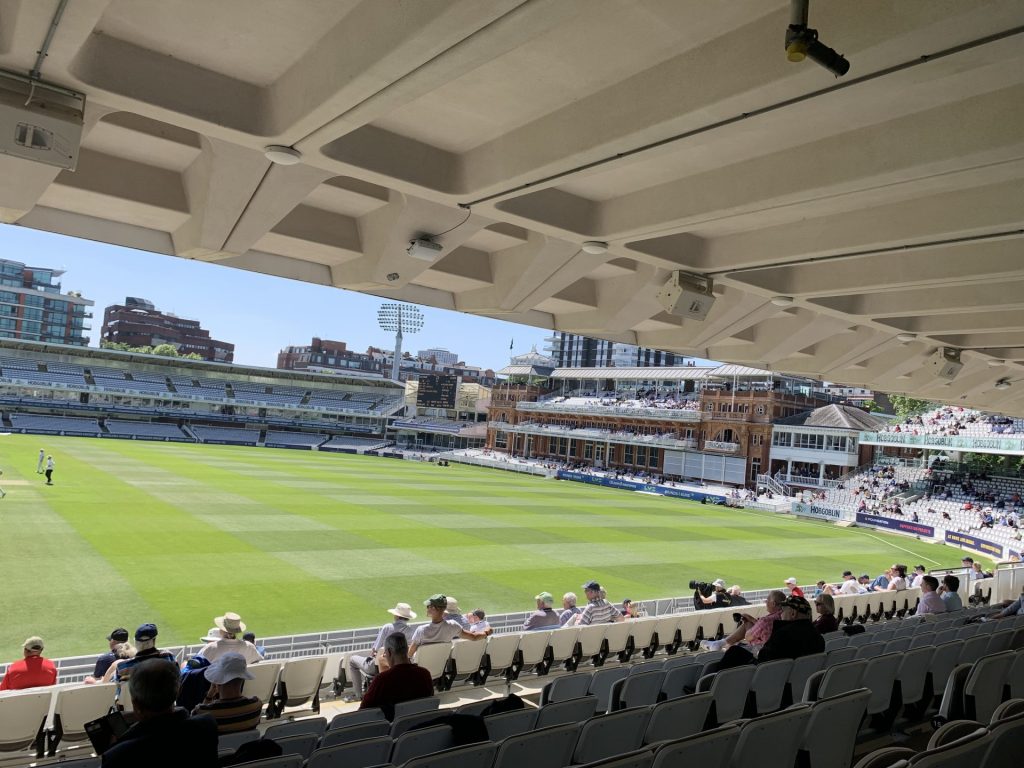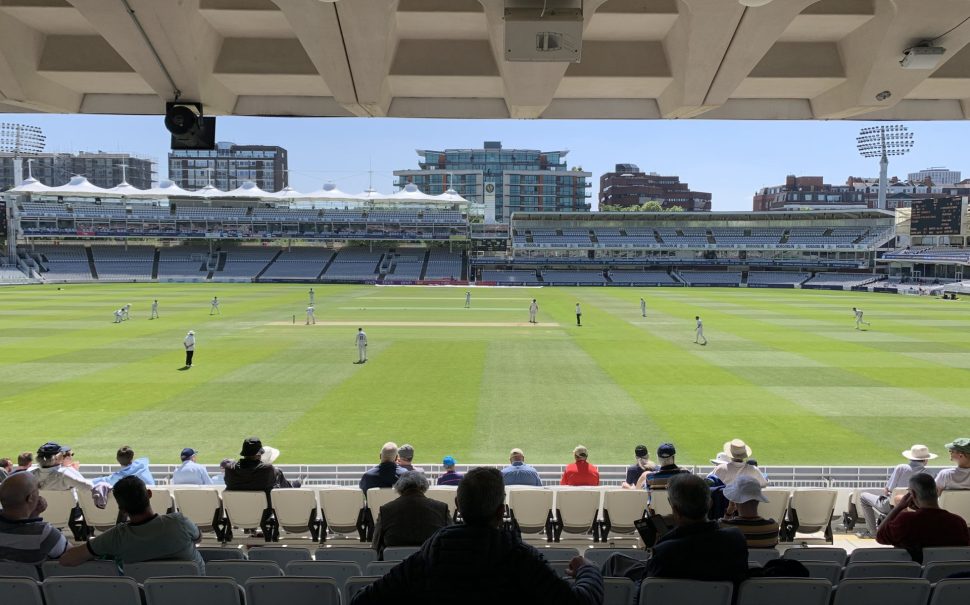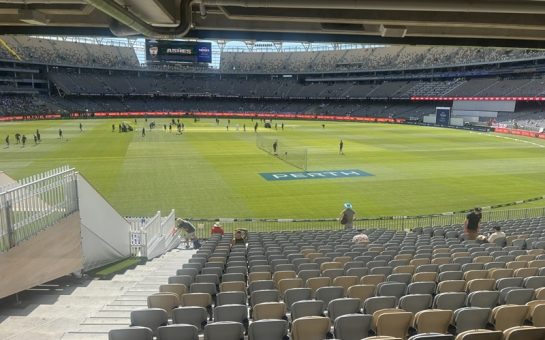There were several reasons not to watch day three of Middlesex’s County Championship match with Nottinghamshire at Lord’s last Saturday.
It was a Division Two game. The visitors were in total control. Five miles away, Wembley was preparing for the FA Cup final and the Tubes around St John’s Wood were rammed.
Yet, there was a generous smattering of spectators as play began at 11am at a sun-drenched Home of Cricket. They sat through a steady morning session, complete with arbitrary ripples of applause, as Notts batted Middlesex out of the four-day contest.
Why, with so many seemingly more exciting ways to spend a Saturday, do supporters watch the County Championship? Even those at Lord’s understand such sentiment.
“To the uninitiated, it is turgid,” said Middlesex fan Kevin Casey. “I can see why one would think it is boring.
“If you came to it cold and have not spent a lifetime watching it, there is no obvious appeal.”
Casey grew up in Shepperton and began supporting Middlesex in the 1960s, when the longest format still ruled domestic cricket. Since then, the one-day game has gradually marginalised it.
In 1963, a 60-over competition was launched in response to declining County Championship attendances. Subsequent 55, 50 and 40-over tournaments had similar objectives, before Twenty20 (T20) was introduced in 2003. The truncation continued last summer through the Hundred.
Off the field, the county game’s racism crisis further reduces its appeal to novices.
Nevertheless, the Championship remains precious to many.
“I much prefer the four-day game because it is a lot more relaxing,” said Casey, who caught the 7:25am train from his Cumbria home to see the start of play. “I just love it. It is almost meditative.”

Robert Brown, meanwhile, made the shorter but still sizeable trip from Reading.
“I find it very relaxing,” he said. “This is what cricket is renowned for. It demands more skill and is what the sport is all about.
“I don’t particularly like the modern versions. The Hundred takes a lot more away from the county game.”
Like Casey, and indeed much of the Lord’s crowd last Saturday, Brown has been watching Middlesex for decades.
They are keen to pass on their passion to younger generations, who are less naturally drawn to it.
Eddie Prentice and his 13-year-old son, Charlie, travelled from Kent to watch. Despite his tender age, Charlie is aware that the Championship faces a tough challenge to attract his demographic.
When asked what his favourite format is, he admitted: “Probably the shorter, probably because of my age and shorter attention span.”
With its slow pace and acquired taste, the Championship is hardly compatible with the era of instantaneous entertainment. The presence of Charlie and dozens of other children at Lord’s is a triumph in itself.
“There are so many other things to do now,” declared Casey. “In the 1950s and 1960s, there was not an awful lot to do when you were a kid.”
For Eddie, the Championship needs more coverage to attract new fans.
He said: “It is under-reported in the press. Far too much emphasis is put on football because that is where the money is.
“Sport is too centred around business and is losing its way. Unless you look online, you are not going to know there is a game on at Middlesex.”
Sights such as Middlesex’s ‘School Days’, which have seen thousands of children offered free entry at Lord’s, are a small step forward.
“They have got to catch up with the media aspect of pushing cricket out to the youth. The counties have got to be more involved with the local clubs,” Eddie added. “They need to get more youngsters into the ground.”
The Championship’s future is uncertain. On the one hand, the live-streaming of every ball on YouTube means accessibility is at an all-time high, with the i revealing in 2021 that the majority of viewers for Warwickshire streams are aged between 18 and 34, while the total audience can push 60,000 in one day.
On the other hand, it remains a non-sensical financial operation.
While Lord’s can attract crowds of over 27,000 for Middlesex T20 matches, a Championship attendance totalling 3,000 is considered a relative success.
Rob Key, the new managing director of the England men’s team, recognised this in his autobiography ‘Oi, Key’: Tales of a Journeyman Cricketer.
He wrote: “Four-day cricket as a business is completely bankrupt. It makes no money and costs a hell of a lot to put on.
“Compared to other formats, it simply makes zero financial sense.”
Mitigating the economic issues would need drastic propositions, such as former England batter Kevin Pietersen’s call for the Championship’s quality to be increased through franchising.
That would likely mean removing some of the 18 first-class counties to create a competition resembling short-format tournaments like the Hundred or Indian Premier League (IPL). County die-hards’ backlash to the suggestion has been intense.
“Who is going to run cricket then? Businessmen. It needs to be run as a sport, not solely a business,” insisted Eddie.
The Championship might survive because it is not a normal business. It still offers the chance to witness masters of their craft and remarkable feats.
At Lord’s, fans watched Nottinghamshire’s Stuart Broad, 537 Test wickets and all, responding to his omission from England’s tour of the Caribbean last March.
They also saw the game explode into life in the afternoon, as Notts captain Steven Mullaney hit the county’s fastest ever Championship century.
The high standard, in theory, should help England’s languishing Test team – another undeniable purpose of the County Championship.
However, Eddie believes this format is also under threat, citing how the once domineering West Indies Test side is a victim of more lucrative T20 franchise tournaments.
He said: “Look at what the IPL is doing. Test players are not available when they should be.
“West Indies Test cricket is not the same anymore, because their players go around the world to play T20 for the money.”
Brown is fearful too, speculating that four-day cricket could be extinct in five years. Casey is only marginally more optimistic.
He said: “I think if it were going to fold it would have folded by now. I would like to think it is sustainable, but who knows?
“Woolworths went out of business. Debenhams went out of business. Any big operation can go out of business, why not county cricket?”
Because it still matters to many, the crowd at Lord’s would cry in response.
How to preserve it in perpetuity? The answer to that question is not so obvious.





Join the discussion